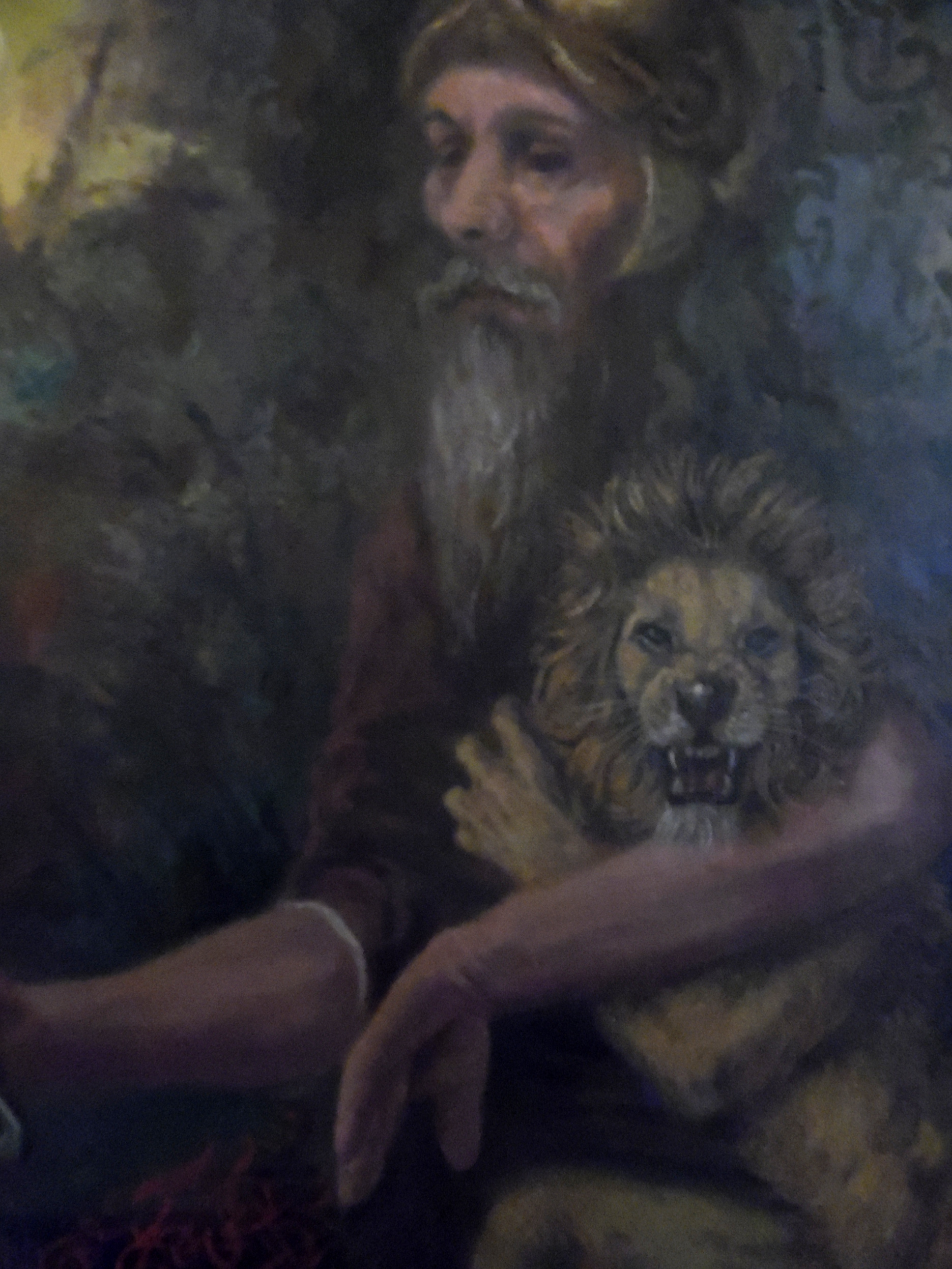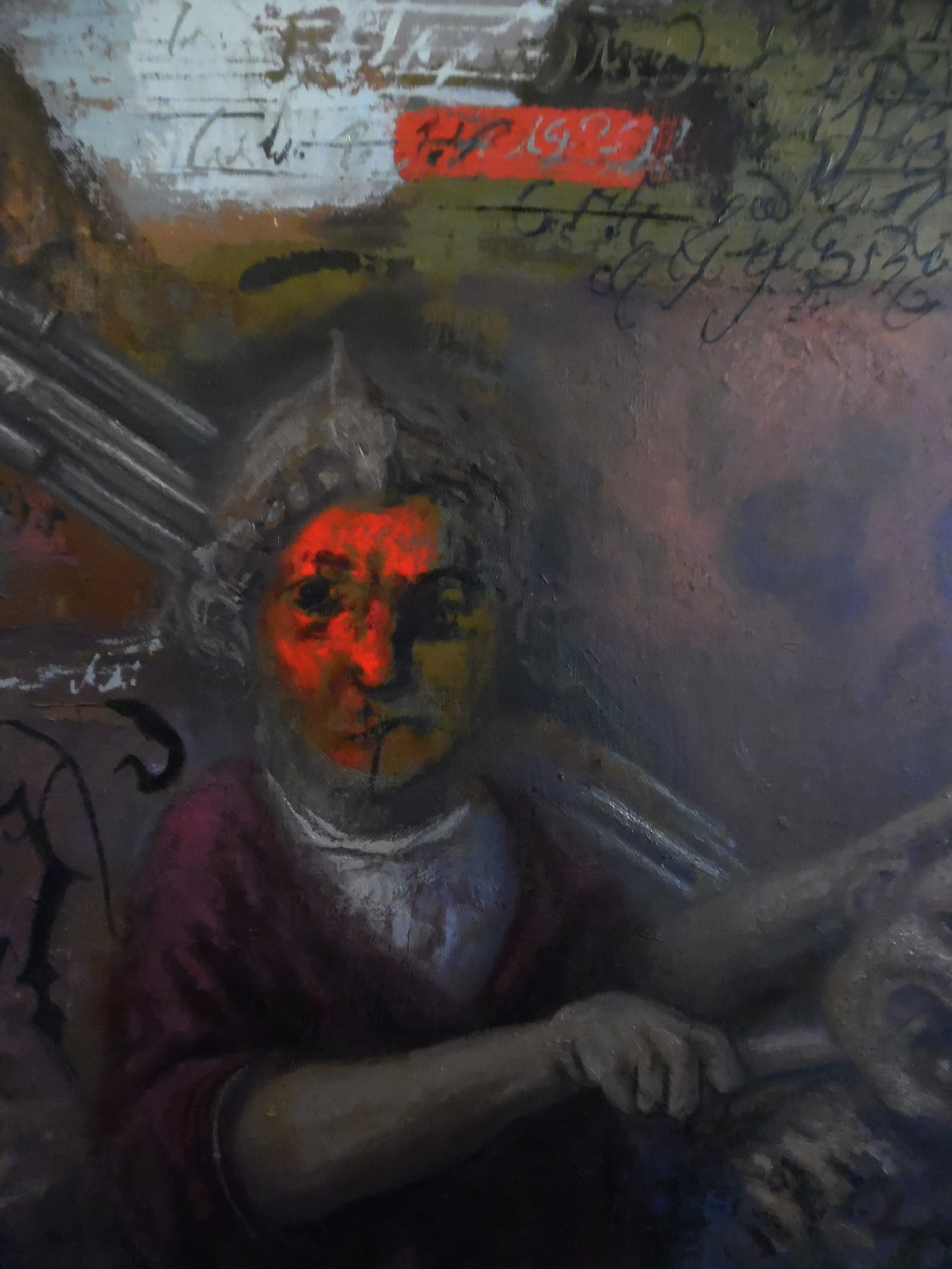About Me
As an investigator of languages Mark Julyan worked as an assistant to an assistant of the English philosopher Bernard Williams between 1993-2001. As a book-printer, his book, based on a logico-lingistic interpretation of Kant's otherwise obscure appendix to the 'Universal Natural History and Theory of the Heavens' was released in December 2024. Not incidentally, I am a painter and printer - a lover of impasto, pentimento, originals as counterfiets, surfeit's des witzes, reversed hierarchies and duality of aspect in colours, Kippenberger's logic - an En-Font Terrible! My practise is based on (mostly) linguistic, often philsophically centred theme's. One day I hope to sell some paintings or write less books. Face Font Refrain (Frame): Now the book is finished, I am returning to a theme considered as an extension of Deleuze and Guattari's concept of "Faciallity" to include The Font, The Frame, The Re-Frain - although in a way perhaps not too complimentary to Deleuze or Guattari. D & G tell us that "Titian began his paintings in black and white, not to make outlines to fill in, but as the matrix for each of the colors to come". In ‘A Thousand Plateau’s' we are told that : "What face has not called upon the landscapes it amalgamated, sea and hill; what landscape has not evoked the face that would have completed it, providing an unexpected complement for its lines and traits? Even when painting becomes abstract, all it does is rediscover the black hole and white wall, the great composition of the white canvas and black slash. Tearing, but also stretching of the canvas along an axis of escape (fuite), at a vanishing point (point defuite), along a diagonal, by a knife slice, slash, or hole: the machine is already in place that always functions to produce faces and landscapes, however abstract". For D & G 'subjectification' is white, 'Signification' is black and the processes described are very often 'reversible'.
While
clear that Deleuze and Guattari are speaking figuratively when
they say that “Signifiance [A term
of art describing syntagmatic and paradigmatic processes of language
as a "signifying regime of signs"] is never without a white
wall upon which it inscribes its signs and redundancies..” and that
“Subjectification is never without a black hole..”; and that
following Ricoeur, Derrida, et al, they index this figuration as a
living process between an order of language at one pole and the
always new situation at the other when they write that “The form of
the signifier in language, even its units, would remain indeterminate
if the potential listener did not use the face of the speaker to
guide his or her choices..”, their subsequent claims that this
particular figuration functions retroactively is curiously astonishing, as an
understanding of the history of conceptions regarding symbolic uses
of language in philosophy should demonstrate.
Whereas the conventional or “substitution model” of symbol or metaphor first developed by Aristotle restricted figurative language to the realms of rhetoric and poetics, and for 20thC analytic philosophy metaphors are considered to be merely ornamental (perhaps poetic, creative or eloquent) but which can never be true in referring to new propositional content, continental philosophers, developing new possibilities opened up by Kant’s representation of experience as the subjective determination of an objective world in The Critique of Pure Reason, reversed the order of species and genus as found in Aristotle in making symbol and metaphor the original mode for representation of experience and being - and thus taking us beyond correspondence theories of truth. For Nietzsche, metaphor lives performatively through the text (thus it is something enacted through articulation rather than theorized explicitly). The figurations we use do not merely, if creatively reflect pre-existing similarities or causal relationships between things but rather function in perpetual tension between ontologies as opposed to aligning with an abiding essence and are therefore incapable of reduplication. For Nietzsche metaphor thus operates along a tension between competing perspectives. For Heidegger, the metaphorical only exists within metaphysics and can therefore only operate with the tension between thought and sensation and signals a totality through which being reveals itself. For Ricoeur, in contrast to Nietzsche, there is another form of discourse, the speculative, which can individuate and understand metaphor and therefore operate alongside this in terms of a specifically explicated theory of metaphor. Taking metaphor beyond Heideggers’ metaphysics, Ricoeur considers how metaphor drives this speculative reflection towards new worlds of meaning and being through double reference. Derrida, on the other hand, reiterating Nietzsche sees metaphor as essentially performative in nature and not as something that subverts metaphysics but as the hidden source of the conceptual world. Specifically for Ricoeur (1977: p.197) “Can one not say that the strategy of language at work in metaphor consists in obliterating the logical and established frontiers of language, in order to bring to light new resemblances the previous classification kept us from seeing? In other words, the power of metaphor would be to break an old categorization, in order to establish new logical frontiers on the ruins of their forerunners”. Indeed, from Heidegger onwards, whatever their substantial differences, continental philosophers were all in agreement where figurative language is seen as emerging from an ontological rather than epistemic or objectifying engagement with the world to the extent that it is primary vehicle for the disclosure and creation of new forms of meaning such as might generate rather than merely describe truth. Creative metaphor is, in a word, necessarily forward looking. But
then Deleuze and Guattari, in making the claim that this
monochromatic con-figuration of the significant and subjective was
somehow intuited and thereafter enacted upon before the event by
Titian as avant le lettre, the this is the why Titian (they explicity state) adopted a certain
way of beginning in painting (because the content of their metaphor
seemingly somehow exists ‘out there’), must be read as displacing the
continental emphasis on the always forward looking nature of such
uses of creative figural language, which leaves us with a different
kind of dilemma. In
a world of
universal Platonic forms, where metaphor is a process which merely
lays bare what has always been the underlying universal form of
things, such an anticipation by Titian would indeed be possible. In
this case, the black hole and the white surface would constitute one
of the eternal forms. The fact that this essay is called ‘Year
Zero: Faciality’ even implies that something like this might even be subconsciously enacted as the case. Perhaps Deleuze encountered Titian through that mid-century black and white sensiblity in photorgraphy. that so charactizes our nostalgic French yearnings, that he eulogies so energetically, and that, before books discovered colour photography, existed everywhere in the art publications of his early years? Of course Titian never did begin his paintings in black and white. Vasari tells us that Titian used to set himself before living and natural objects and counterfeit them as well as he was able with colors, and paint them broadly with tints crude or soft according as the life demanded, without doing any drawing, holding it as certain that to paint with colors only, without the study of drawing on paper, was the true and best method of working, and the true design". Perhaps we might instead reflect on those finished works of art that not only began but completed themselves in these mono-chrome modes without hesitation, such as e.g. this grisaile of what appears to be a portrait of Rubens with half a moustache, by an unknown artist.
On art:
All of my art, whether based on the the human figure or architectural forms, can be read with an emphasis on a variety of capricious, whimsical, stylistic and functional inconsistencies or self-contradictory aspects. These may be non-mimetic, formal aspects or they may relate to the conceptual meaning of the work. I might build a painting out of a tonal structure where, for example, certain objects may be lit from a different direction to other parts of the painting, Or perhaps the work involves inconsistent vanishing points or unusual colour combinations or contradictory meanings. I tend to organise my themes in series, where the title of the series is envisaged as illuminating the content. Singers
for a Silent Movie:
In "Singers for a Silent Movie (The Auditioners)", the paintings provide a context, (that of a singing audition for a silent movie), which challenges the relationship between subject and object as ordinarily experienced in a work of art. By presenting the figure as participating in an audition, it presents the viewer with a figure which is not passive, but which is inviting a judgement as to the quality of their silence in singing. The figure depicted therefore, might be viewed as an active rather than passive participant in the exchange in that they are making a demand upon the viewer. This
aspect of the exchange is reinforced through the inclusion of an
identity marker on the page in the form of the phonetic spelling of
'the auditioners' as
'ðiː
ɔː'dɪʃ(ə)nəs'.. Metaphysician With an Adjustable:
Logic was designated by Aristotle (or possibly by his early followers) as the 'organon' literally the tool of thinking. A 'lemma' per Kant, is a form of logic taken from one science and evinced jnto another (e.g. a pair of pliers used as a jack). Consequently, as Metaphysicians are infinitely pliable in their thinking and already have good spanners, they have no need of any lemma.
|
|||||||||
|
|





